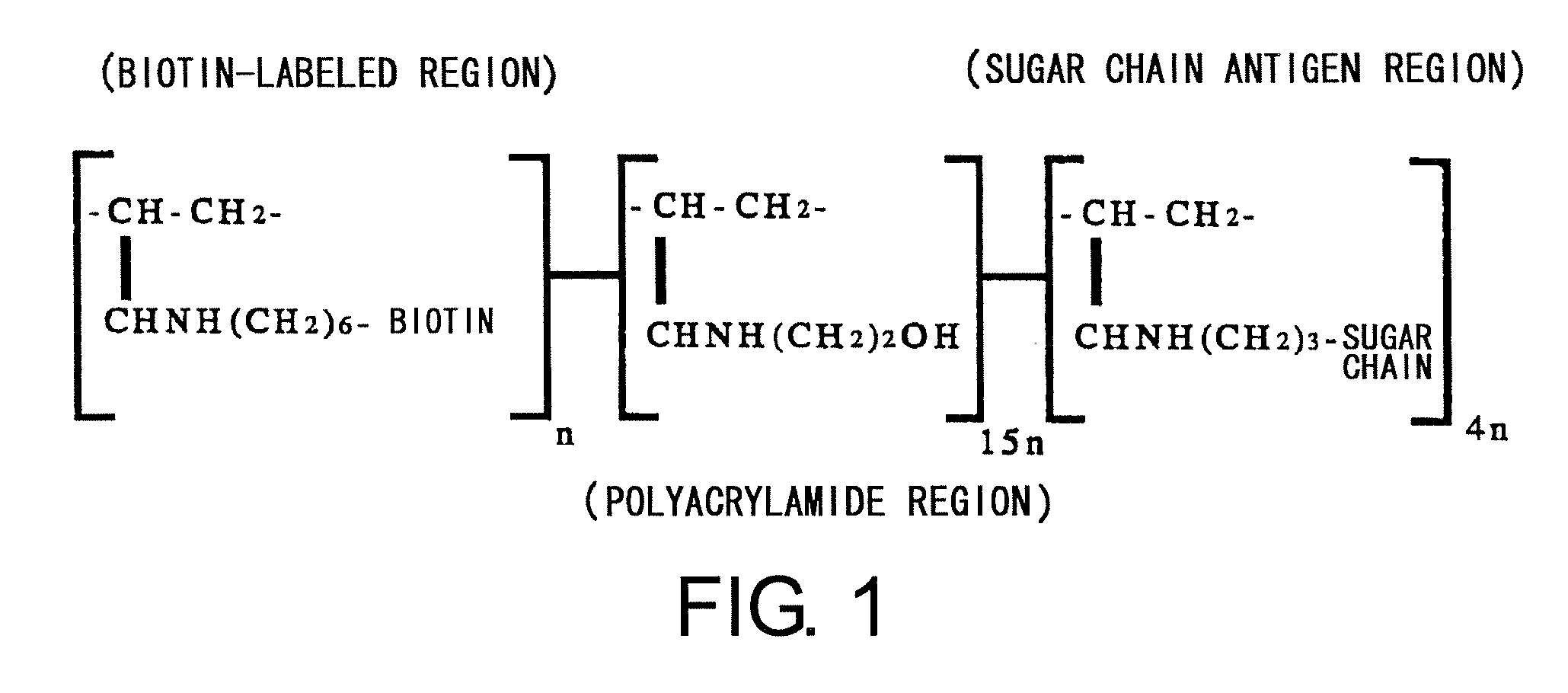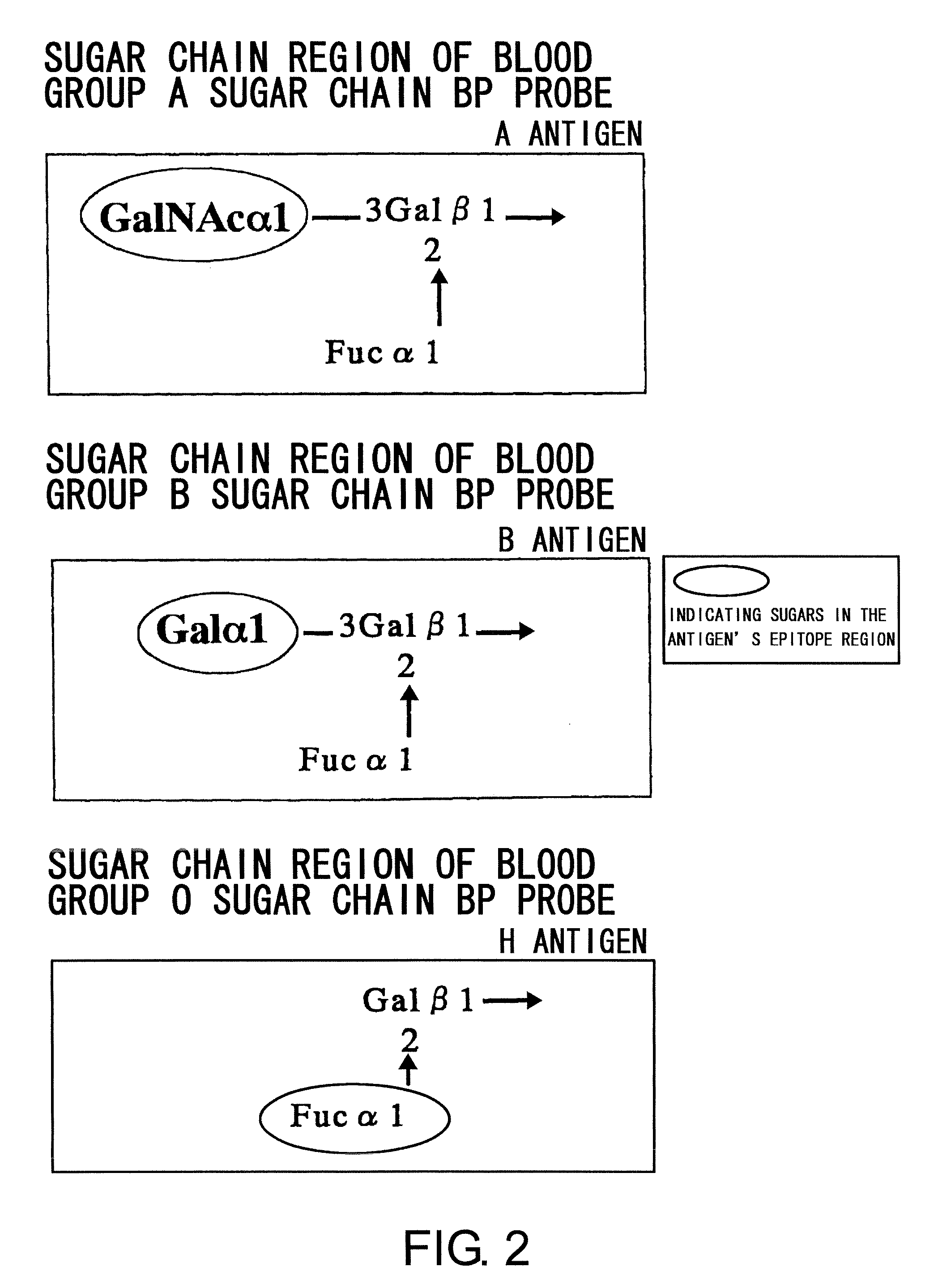Human Abo Blood Group-Binding Lactobacilli
a technology of lactobacilli and human abo, which is applied in the field of lactobacilli and screening of lactobacilli, can solve the problems of unlikely colonization of lactobacilli via lectin-like proteins in intestinal epithelia
- Summary
- Abstract
- Description
- Claims
- Application Information
AI Technical Summary
Benefits of technology
Problems solved by technology
Method used
Image
Examples
example 1
Gas Production Test
[0060]Lactobacilli that do not produce gas are preferred as lactobacilli used in yogurt production. This is because Japanese law requires selling yogurt in airtight containers. This also prevents product defects and ruptures due to container expansion accompanying gas production. Thus, gas production tests were carried out with 238 strains.
[0061]A lactobacilli activation culture (37° C., 18 hours) was carried out twice in MRS Broth (DIFCO). Aluminum-capped test tubes each containing a Durham tube and MRS Broth (5 mL) were sterilized (121° C., 15 minutes). Durham tubes were put into the tubes with their openings at the bottom and air bubbles were removed from the Durham tubes during sterilization. 10 μL of lactobacillus suspension at about 109 cfu / mL was inoculated into each of the above-mentioned sterilized aluminum-capped test tubes and cultured anaerobically at 37° C. for 24 hours. After the end of the culture, presence or absence of gas accumulated in Durham tu...
example 2
Analysis of Blood Group Antigen-Recognizing Ability
[0062]To obtain lactobacilli for blood group-compatible yogurt, the present inventors decided to select lactobacilli that recognize and bind to blood group antigens by using surface plasmon resonance spectrums. As test sample bacteria, 238 strains belonging to the Lactobacillus acidophilus group (L. gasseri, L. plantarum, L. crispatus, L. amylovorus, L. casei, L. salivarius, L. brevis, L. fermentu, and such) were prepared. BIACORE1000 was used as the apparatus for surface plasmon resonance spectrum analysis.
2-(1) Preparation of Analytes
[0063]Each bacterial strain was seeded to start culture and passaged three times in an MRS medium, and then cultured for 12 hours and dispensed into 1.5 mL volume tubes in 500 μL aliquots. Bacteria obtained by centrifugal separation of these suspensions (6,000 rpm at 4° C. for 10 minutes) were washed twice in PBS (pH 7.2), freeze-dried, and suspended at a concentration of 0.1 mg / mL by using HBS-EP buf...
example 3
Stomach-Acid Tolerance Test and Bile-Acid Tolerance Test
[0086]Lactobacilli incorporated into a body in the form of yogurt preferably stay alive in the intestine to fully exert their functions. For this reason, stomach-acid tolerance test and bile-acid tolerance test were carried out.
3-(1) Stomach-Acid Tolerance Test
[0087]One milliliter bacterial suspension of lactobacilli, prepared by two activation cultures (37° C., 18 hours) in Lactobacilli MRS broth (DIFCO) followed by two washes with physiological saline, was added to 9 mL of filter-sterilized artificial stomach acid at pH 2 [NaCl (0.2%), pepsin (1:5000, Tokyo Chemical Industry Co., Ltd) (0.35%): adjusted to pH 2 with 1N hydrochloric acid], and kept in contact for two hours under aerobic conditions. After this, 1 mL aliquot was taken from the mixture, and the reaction was stopped by adding 9 mL of 67 mM phosphate buffer (pH 6.5). Numbers of live bacteria before and after the contact with the artificial stomach acid were measured...
PUM
 Login to View More
Login to View More Abstract
Description
Claims
Application Information
 Login to View More
Login to View More - R&D
- Intellectual Property
- Life Sciences
- Materials
- Tech Scout
- Unparalleled Data Quality
- Higher Quality Content
- 60% Fewer Hallucinations
Browse by: Latest US Patents, China's latest patents, Technical Efficacy Thesaurus, Application Domain, Technology Topic, Popular Technical Reports.
© 2025 PatSnap. All rights reserved.Legal|Privacy policy|Modern Slavery Act Transparency Statement|Sitemap|About US| Contact US: help@patsnap.com


